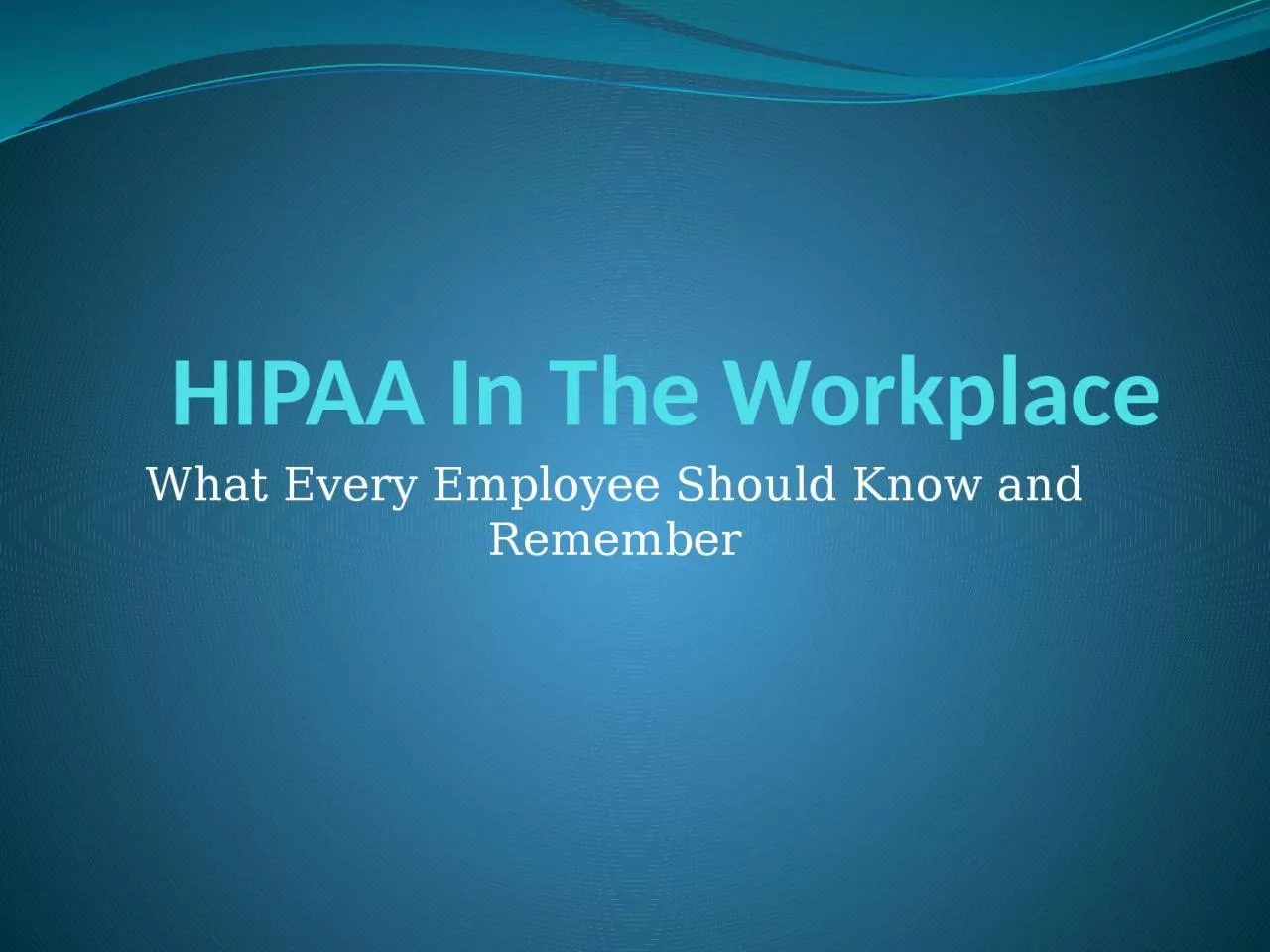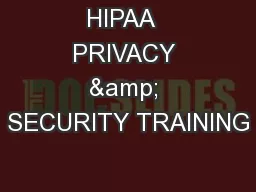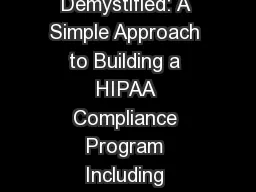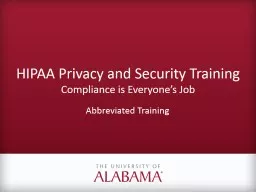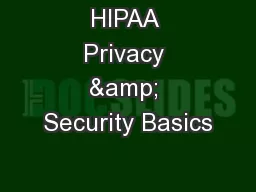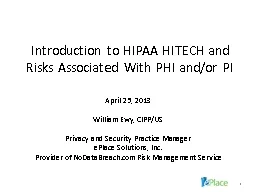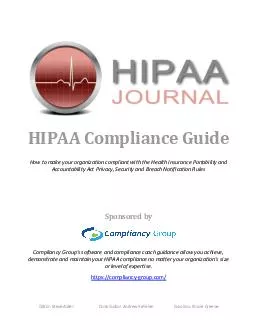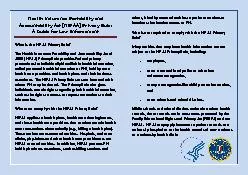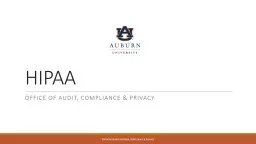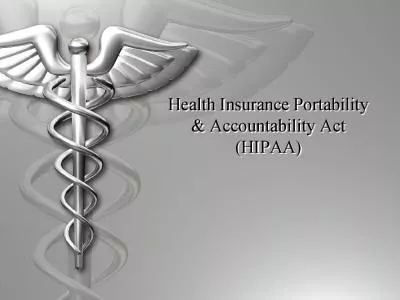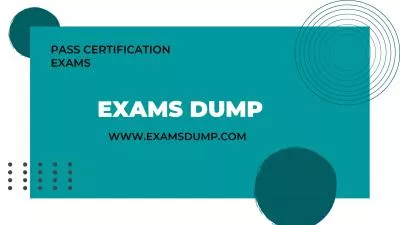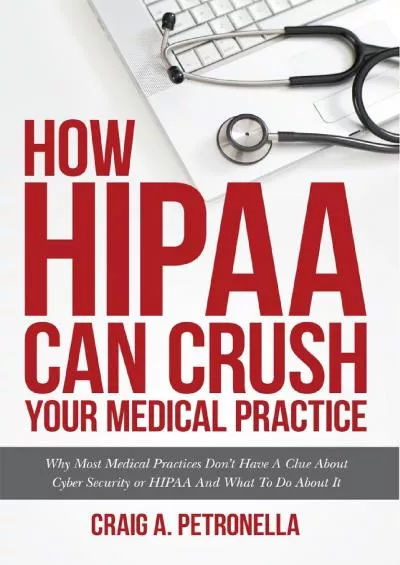PPT-HIPAA In The Workplace What Every Employee Should Know and Remember
Author : MusicalMadness | Published Date : 2022-07-28
What is HIPAA The H ealth I nsurance P ortability and A ccountability A ct of 1996 Portable Accountable Rules for Privacy Rules for Security Final HIPAA Omnibus
Presentation Embed Code
Download Presentation
Download Presentation The PPT/PDF document "HIPAA In The Workplace What Every Employ..." is the property of its rightful owner. Permission is granted to download and print the materials on this website for personal, non-commercial use only, and to display it on your personal computer provided you do not modify the materials and that you retain all copyright notices contained in the materials. By downloading content from our website, you accept the terms of this agreement.
HIPAA In The Workplace What Every Employee Should Know and Remember: Transcript
Download Rules Of Document
"HIPAA In The Workplace What Every Employee Should Know and Remember"The content belongs to its owner. You may download and print it for personal use, without modification, and keep all copyright notices. By downloading, you agree to these terms.
Related Documents

